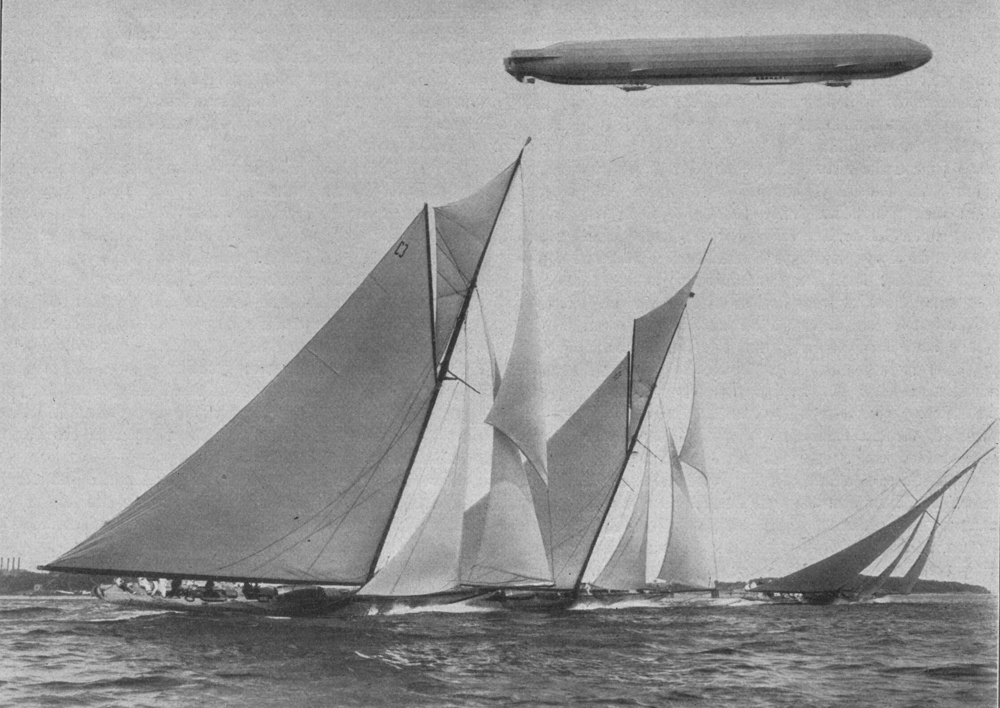
The 19mR Octavia racing with the 15mR class (Kiel Week, 1913)
Used from 1907–1920
![]()
where
- L = waterline length (LWL)
- B = beam
- G = chain girth
- d = difference between girth and chain
- S = sail area
- F = freeboard
Second International Rule
Used from 1920–1933.
![]()
where
- L = waterline length (LWL)
- G = chain girth
- d = difference between girth and chain
- S = sail area
- F = freeboard
Third International Rule
![]() Used from 1933–1939.
Used from 1933–1939.
where
- L = waterline length (LWL)
- d = difference between girth and chain
- S = sail area
- F = freeboard
Rule Forms
The International Rule has been the backbone of Yacht racing. The Rule created a formula that took into account most problematic areas that had previously caused dissent among the racing nations. It does not restrict size—many individual classes were created. It allowed designers a degree of latitude—yet controlled unsafe extremes. It laid down construction rules and governed the use of materials—yet understood that the Rule must develop.
It is important to note the term Metre does not refer to the length of the yacht; it is the product of a formula and denotes the class. A Six Metre yacht can be from 10 metres to 12 metres in length.
Metre Rule has proven to be successful and enduring, seeing only minor revisions over the years. Whilst many different Metre Class yachts were constructed during those first heady years, three sizes have maintained their popularity; the 6, 8 and 12 Metre Classes. The year after the ratification, the 12 Metre Class were chosen for the Olympics—the 6 and 8 Metres were also used at different stages. The 12 Metre Class was used for the America’s Cup events until 1986. Relatively new arrival is one-person 2.4 Metre Class, currently active Paralympics class.
International Rule should not be confused with Square Metre Rule.
